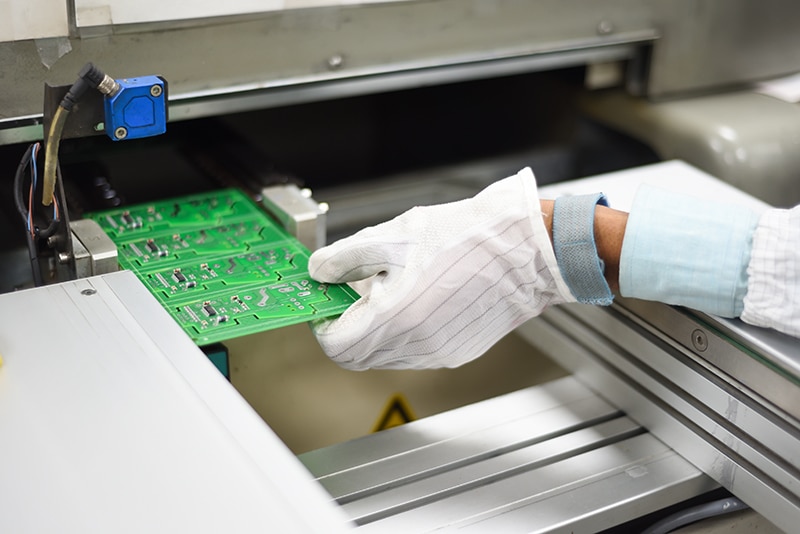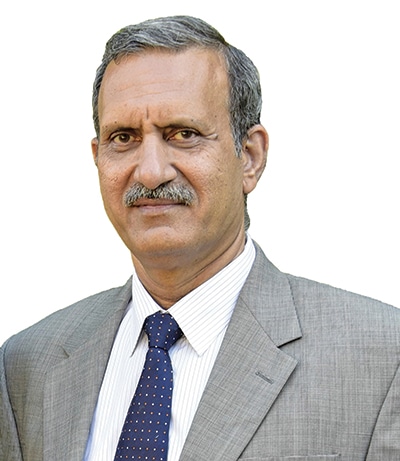A recent article in a leading business newspaper reported that industry executives, during a government meeting, had suggested that EMS firms create more employment than electronics component manufacturers—for every rupee invested. To verify this claim, a review was conducted with both component manufacturers and EMS firms, as well as several trade associations.

The media has long been a powerful tool in shaping government policy, which makes it essential for research and reporting to remain unbiased. When prominent outlets publish stories citing unnamed ‘industry experts,’ all seemingly aligned in the same direction, it inevitably raises concerns.
India’s electronics industry has already suffered the effects of policies influenced by those with limited investment in its long-term growth. Now, as the sector sees fresh opportunities, it is critical to ensure that past mistakes are not repeated.
The article in question, published by a leading business daily, raised doubts about whether it was based on thorough research or aimed at steering policy in a particular direction. It suggested that EMS firms (electronics manufacturing services, or contract manufacturers) provide significantly more employment than electronics component manufacturers—for every 10 million invested. The responsibility for this claim was attributed to anonymous ‘industry executives,’ with further suggestions that the government of India might use these findings to justify offering more subsidies or incentives to EMS firms over component manufacturers.
This raises the possibility of policy influence.
Yet, the article failed to name these industry executives or provide their credentials. They could just as easily be PR or marketing professionals with vested interests in shaping these decisions.
Were any counterarguments presented? No.
Dismissing such claims outright without a thorough investigation, however, would not align with responsible journalism. Instead, the Electronics For You team—Nijhum Rudra, Nitisha Dubey, and Yashasvini Razdan—consulted industry sources. To ensure an unbiased approach, representatives from both EMS firms and component manufacturers were interviewed, along with leaders from various trade associations, many of whom represent both sectors.
- The obvious: the level of automation differs across manufacturing of components and EMS firms. Not every firm (EMS or components) has the same degree of automation. More automation means less employment per investment (or turnover).
- Just as there are product categories which require more labour in EMS, there are categories of components (such as passives) which require a high degree of manual labour.
- On average, component manufacturers can hire three to five times more labour than an EMS firm of the equivalent size!
- Since many functions in EMS firms can be non-skilled, the percentage of contractual labour tends to be higher. Components manufacturing needs more skilled labour and, hence, these firms tend to hire employees—thus providing much longer-term employment, plus more opportunities to upskill.
- The seasonality of work, and thus seasonality in demand for labour, is more common in EMS than in components manufacturing.
- Components manufacturing can be set up in rural areas too, while EMS firms are better suited for urban settings.
- The level of automation in EMS is exceeding that in the manufacturing of components. There is already talk about dark-room factories—ones where there are no humans on the floor. Thus, the employment-to-investment ratio will continue to drop faster in EMS than in the manufacturing of components.
Plus, there are more strategic reasons for manufacturing electronics components in India, namely: a steady supply chain and more predictability in input pricing for manufacturers of electronics. These two factors are critical to support our manufacturers of electronics in India and make India’s electronics industry truly ‘aatmanirbhar’ (self-reliant).
The above conclusions are all thanks to inputs shared by industry leaders representing different facets of the electronics industry of India, which are shared below (in alphabetical order with respect to the name of the organisation):

Rajesh Bhope, VP, Alcon Electronics (components): “EMS (electronic manufacturing services) companies are buying components and then assembling them. They are, first of all, dependent upon all types of component manufacturers. If their supply chain improves, they will grow and thereby fuel the growth of their suppliers—like the proverbial egg and chicken situation. The government must support both industries simultaneously.”

Abhishek Malik, Executive Director, Calcom Vision Limited (EMS): “Yes, assembly (EMS) can create more employment; however, it is only temporary until the government stops providing benefits. Electronic components are generally more capital-intensive and have a much longer-term outlook, thereby creating long-term employment.”

Pankaj Gulati, Exec. VP & COO, CDIL (components): “There will be much more job creation in the components industry than I can see in EMS because there hardly exists any components industry in India today. I need help finding skilled workers in the components industry.”

Jairaj Srinivas – Director-General, CIMEI (trade association): “No! Labour hiring in EMS (electronics manufacturing services) firms is definitely not more than in electronics components manufacturing. In EMS, everything is mechanised and automated, so not much labour is required in EMS companies. However, when it comes to component manufacturing, it is more labour-oriented. If the government is serious about setting up a component industry, they will need to employ more labour, especially women, as physical labour is often required in electronics components manufacturing.
To further grow employment within the EMS sector, the current cap of `180 million should be removed because not all players within the EMS industry have that capacity or need to invest. But if they get incentives too—they will certainly grow their operations and hire more labour.”

Vinod Sharma, MD, Deki Electronics (components): “If you look at the finished goods industry where SKD is being done, the number of jobs for every crore (10 million) of turnover is about 0.5 to 1. However, in the EMS industry, where we are doing CKD, SKD, and even box packaging, the ratio is taken as 10 million for one person in terms of turnover. In passive component manufacturing, the number could be between two and five people per ten million of rupees of turnover.
In an EMS company, a person assembling a manual component on a PCB can be trained in a few weeks, but in components manufacturing, many skill requirements are such that it will take the workforce 3-6 months just to come to the line.”

Rajoo Goel, Secretary-General, ELCINA (trade association): “Components manufacturing also supports EMS and assembly manufacturing and, thus, is the building block of the ESDM ecosystem.”

Girish Vaze, CMD, Elcom International (components): “The statement that job creation is technically tough in electronic parts’ is incorrect. Electronic parts are of various types. There are some parts which require automation for final assemblies or processes, but there are an equal number of parts, most of which are electromechanical, that employ labour-intensive processes where automation is not feasible due to the high level of customisations and variations required.
Our experience is that our products have generated a lot of employment for assembly workers—both male and female—and also for semi-skilled and technical employees up the stream of product development. It is not only ESDM or assembly of mobile phones that generate jobs but also the parts that are used for every type of electronic product, whether the end application is white goods, instrumentation, aerospace and defence, power electronics, automation, and others.”

M. Thiyagarajan, President, IPCA (trade association): “The reality is that manufacturing electronics components in India will fuel growth across the entire industry. With components currently being imported, manufacturers, including EMS firms, face significant fluctuations in both pricing and delivery.
Indirect employment dominates the electronics sector. For example, countries like the US are producing AI chips in large volumes, which not only generates jobs in that specific sector but also drives manufacturing in related electronics, ultimately creating employment across various industries.
While EMS operations typically require larger areas, component manufacturing and smaller industries can thrive in rural regions as well.”

Shishir Gupta, CEO, Oakter (EMS): “The claim that EMS firms should receive more incentives due to better job opportunities for labour is a significant oversimplification. Both EMS firms and component manufacturers are vital contributors to India’s electronics industry, each with its own unique value proposition. Disregarding the interconnectedness and contributions of both sectors can lead to misguided policy decisions that may hinder the overall growth and development of the electronics industry.”

Dileep Jain, CEO, Rajguru (electronics products & components): “EMS companies have automated most of the work. SMT lines require only a single person to manage the entire process from start to finish. In some cases, one person can handle two lines. Machines are also available for DIP assembly. While certain tasks require labour, much of it is unskilled. On the other hand, component manufacturing requires far less unskilled labour.

Varun Manwani, Director, Sahasra Group (EMS & components): “First, India’s EMS industry is continuously importing components, which puts them at a disadvantage to their global peers. Therefore, component manufacturing must be localised.
It is incorrect to say that component manufacturing is highly automated across the board. It depends on the specific component being produced. A workforce is always necessary when manufacturing lower-level components like passive items, such as connectors. For instance, in PCB manufacturing, or even connector manufacturing, a significant number of workers are required as these processes are highly labour-intensive.”

Nandini B, Director, TESCOM (EMS): “In the EMS industry, there are entry-level jobs available, many of them in the operator category. However, component manufacturing is more complex and offers fewer opportunities for unskilled labour. Additionally, the ratio of jobs to investment is higher in the EMS industry. While EMS is more labour-intensive for both skilled and unskilled labour, component manufacturing tends to be more skill-oriented.”

Aniket Pathak, Uniglobus Electricals and Electronics (components): “While it is true that EMS firms may show higher immediate labour hiring, it is crucial to consider the development time required for electronics component manufacturing. This sector often involves more complex processes, demanding significant time for research, development, and innovation before employment levels can match those of EMS firms. Both EMS and component manufacturing are integral to the electronics ecosystem, each with its own timeline and impact. A more nuanced approach that takes these differences into account would likely lead to more balanced and effective industry growth.”
Rahul Chopra is Editor of Electronics For You and Open Source For You magazines and Managing Director of the EFY Group.






